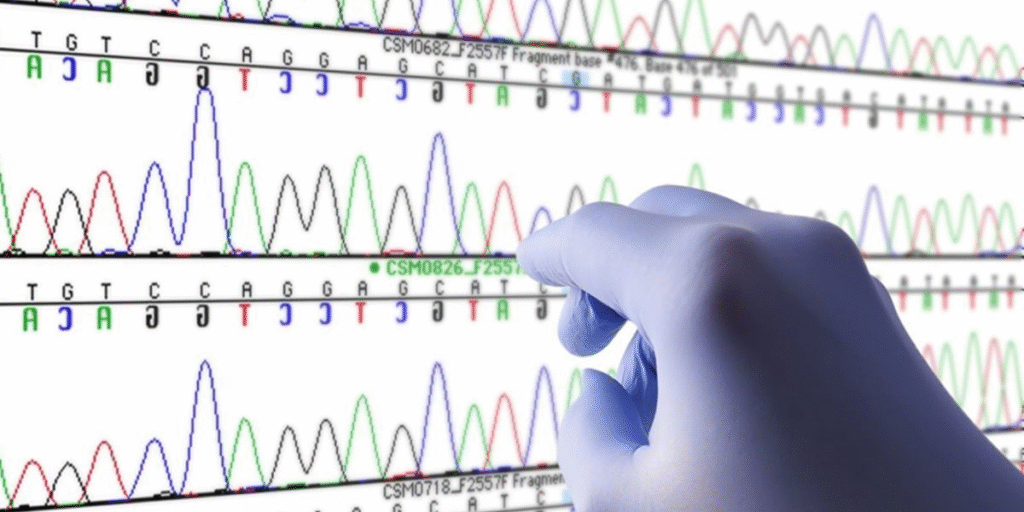
A chat with BCIT’s Forensic team
Interested in learning more about our forensic programs? Join our online Info Session on October 20
Artificial Intelligence (AI) is starting to make its mark on forensic science, providing new methods for interpreting evidence and supporting expert decision-making. While many applications are still in early development, the field is evolving fast. For students interested in science and justice, understanding AI’s role – as a tool, not a substitute – is becoming part of a modern forensic skillset.
Most AI applications in forensic science are currently in the conceptual or research phase. Federal organizations in the U.S., such as the National Institute of Standards and Technology and the National Artificial Intelligence Initiative, are investing in strategies to ensure that AI tools are safe, secure, and trustworthy. The goal is to develop systems that support professionals, without compromising ethics, transparency, or public confidence.
Is AI gaining traction in forensic science?
AI tools, including expert systems and machine learning, have the potential to improve forensic work by identifying patterns, managing large datasets, and reducing possible human bias. In areas like firearms analysis, shoe prints, and DNA profiling, exploratory research is already underway. These tools may eventually support tasks, such as calculating match probabilities or determining the number of contributors in complex DNA samples.
“We’ve been using probabilistic genotyping software (STRmix) to help interpret complex DNA mixtures in case work,” says Steen Hartsen, Forensics faculty. “And students in my FSCT 8160 – Forensic Biology: Applications course also get hands-on experience using this advanced DNA analysis software. While STRmix itself isn’t AI-based, it can incorporate AI for specific tasks like peak detection when used with an additional software package.”
However, for AI to be useful in forensic science, several obstacles must be overcome.
“Of particular concern is how AI can function like a black box, where even experts can’t easily understand how conclusions are reached,” explains Dave McKay, Program Head of the BCIT Forensic Science Option.
“In one recent case, AI was used to enhance and clarify a poor-quality video frame in some important forensic video evidence. But ultimately, the evidence was thrown out of court because the expert witness could not explain exactly how the software tool had generated the final enhanced image and which parts of the image were AI-generated and not a part of the original video.”
And there are more barriers to adopting AI.
What are the challenges of applying AI to forensics?
There are currently three major challenges in implementing AI in forensic science:
1) Training data: If the data used to train AI tools is skewed, outdated, or biased, it can produce inaccurate or unfair outcomes.
For example, existing databases such as the Combined DNA Index System (CODIS) are known to be demographically imbalanced – DNA profiles from specific populations are overrepresented, which can impact algorithm performance.
2) Validation: Some forensic techniques lack sufficient scientific validation, and AI tools could face the same hurdle.
For instance, in the State v. Pickett case in New Jersey in 2021, access to the source code of TrueAllele – a proprietary probabilistic genotyping algorithm (not AI-based) used for DNA analysis – was denied due to trade secret protections. This lack of transparency raised ethical and legal concerns about whether such tools can be independently tested and trusted, especially when courts require clarity on how evidence is interpreted.
3) Interpretation: Even when AI tools are admissible, explaining their results to a judge or jury can be another matter.
Before a forensic expert can present findings based on AI analysis, would a technical specialist be needed to first explain how the system works? And even then, would a jury be able to follow the explanation?
Courts are increasingly grappling with the level of clarity required from AI tools, particularly when fundamental rights, such as due process and the right to challenge evidence, are at stake.
“Will AI come for my job?”
“As is the case in many disciplines, AI has the potential to revolutionize forensic science by increasing speed, accuracy, and consistency in evidence analysis,” says Dr. Dean Hildebrand, Forensic DNA Consultant and Dean of the School of Computing and Academic Studies.
“However, the ethical standards that forensic experts must uphold in the pursuit of justice are high. Appropriately, the adoption of AI in forensics is likely to be cautious and deliberate, with the human element remaining central to the investigative process. Concerns around bias, transparency, and accountability must be carefully addressed to protect the integrity of the justice system. That said, AI technology – when combined with the expertise of highly trained professionals – can help usher in the next wave of advancements in forensic science.”
Subscribe to the twice-yearly Investigator Newsletter to keep up with the latest relating to Forensic Science and Technology at BCIT
This article explores themes discussed in: “CSI/AI: The Potential for Artificial Intelligence in Forensic Science” by Max M. Houck.